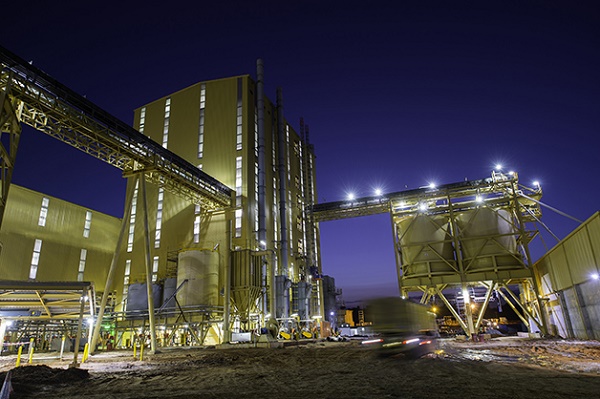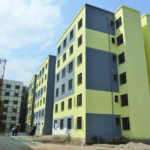Kenya, a country renowned for its breathtaking landscapes and diverse wildlife, is also rich in mineral resources. The mining sector is a vital part of Kenya’s economy, contributing significantly to the country’s GDP and providing employment opportunities. In this comprehensive guide, we delve into the key minerals mined in Kenya, their specific locations, and their economic impact.
Gold Mining in Kenya: A Glittering Opportunity
Locations: Migori and Kakamega Counties
Gold mining is a major economic activity in Kenya, particularly in the regions of Migori and Kakamega. Artisanal miners dominate these areas, extracting gold using traditional methods. However, large-scale mining operations are also being developed to increase production and efficiency.
Economic Impact: Gold mining provides substantial employment opportunities and contributes to local economies. It also attracts foreign investment, further boosting economic growth.
Soda Ash: The Hidden Treasure of Lake Magadi
Location: Lake Magadi, Kajiado County
Lake Magadi in Kajiado County is home to one of the largest soda ash deposits in the world. Soda ash, or trona, is a critical component in the manufacture of glass, detergents, and various chemicals.
Economic Impact: The soda ash industry is a significant contributor to Kenya’s export earnings, providing jobs and supporting local communities around Lake Magadi.
Fluorspar: The Jewel of Kerio Valley
Location: Kerio Valley, Elgeyo-Marakwet County
Kerio Valley is renowned for its rich deposits of fluorspar, a mineral used in the manufacture of aluminum, steel, and hydrofluoric acid. Despite facing operational challenges in recent years, fluorspar mining remains an important industry in the region.
Economic Impact: Fluorspar mining has historically provided employment and infrastructure development in Elgeyo-Marakwet County.
Limestone: The Backbone of Kenya’s Construction Industry
Locations: Kitui and Athi River
Limestone is a crucial raw material for the cement industry, and Kenya has abundant deposits in Kitui and Athi River. These regions are central to Kenya’s cement production, which supports the booming construction sector.
Economic Impact: Limestone mining supports the construction industry, creating jobs and fostering economic development in the mining regions.
Titanium: Kwale County’s Precious Resource
Location: Kwale County
Kwale County is a key player in Kenya’s mineral industry, thanks to its rich deposits of titanium minerals such as ilmenite, rutile, and zircon. These minerals are essential for producing titanium dioxide pigment, used in paints, plastics, and coatings.
Economic Impact: Titanium mining in Kwale has generated significant revenue and provided thousands of jobs, making it a cornerstone of the local economy.
Gemstones: The Hidden Beauty of Taita Taveta
Location: Taita Taveta County
Taita Taveta County is famed for its gemstone deposits, including tsavorite and ruby. The region attracts both local and international miners, making it a vibrant hub for the gemstone trade.
Economic Impact: The gemstone industry supports artisanal miners and contributes to Kenya’s export earnings. It also promotes tourism, with visitors drawn to the mining areas.
Rare Earth Elements: The Future of High-Tech Manufacturing
Location: Kwale County (Mrima Hill)
Kenya’s coastal region of Kwale County, specifically Mrima Hill, is rich in rare earth elements (REEs) such as neodymium, praseodymium, dysprosium, terbium, and yttrium. These elements are crucial for manufacturing high-tech electronics, electric vehicle motors, and renewable energy technologies.
Economic Impact: The extraction of rare earth elements positions Kenya as a significant player in the global supply chain for high-tech industries, attracting investment and fostering technological advancement.
Salt: Coastal Kenya’s Essential Commodity
Locations: Coastal regions
Salt mining is predominantly done along the Kenyan coast, supplying both local and industrial demand. Salt is essential for human consumption, food preservation, and various industrial processes.
Economic Impact: Salt mining supports local economies in coastal regions and provides raw materials for the food and chemical industries.
Gypsum: The Construction Industry’s Secret Ingredient
Location: Kajiado County
Gypsum, used in making plaster of Paris, wallboards, and cement, is mined in Kajiado County. This mineral is essential for the construction industry, supporting infrastructure development across Kenya.
Economic Impact: Gypsum mining provides jobs and supplies essential materials for the construction sector, promoting economic growth in Kajiado County.
Coal: Kenya’s Emerging Energy Source
Location: Mui Basin, Kitui County
The Mui Basin in Kitui County holds significant coal deposits, earmarked for future extraction to provide a reliable source of energy. Coal mining has the potential to reduce Kenya’s reliance on imported energy sources.
Economic Impact: Developing the coal industry could provide energy security, create jobs, and attract investment, supporting national economic development.
Conclusion
Kenya’s mineral wealth is diverse and geographically widespread, offering vast economic opportunities. From gold and gemstones to soda ash and rare earth elements, these minerals play a crucial role in driving economic growth, providing employment, and supporting local communities. Strategic management and sustainable practices will ensure that Kenya can maximize the benefits of its mineral resources while minimizing environmental impacts. As the mining sector continues to develop, Kenya is well-positioned to become a leading player in the global minerals market.





